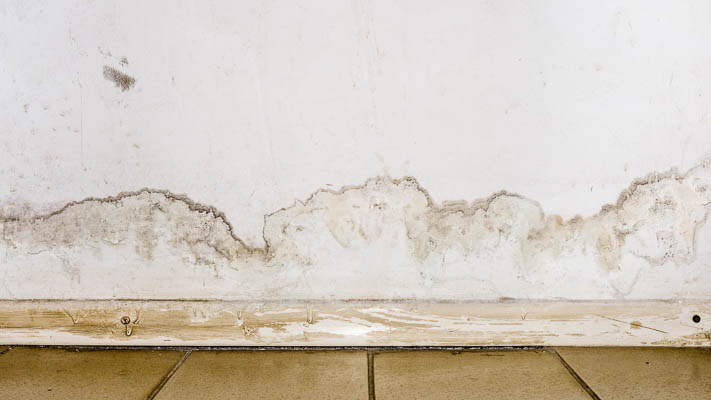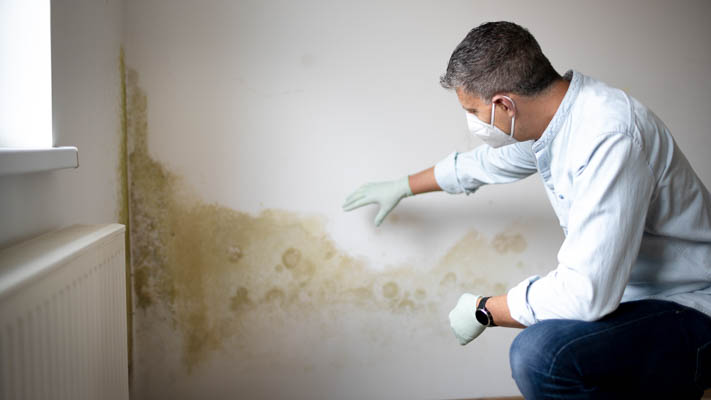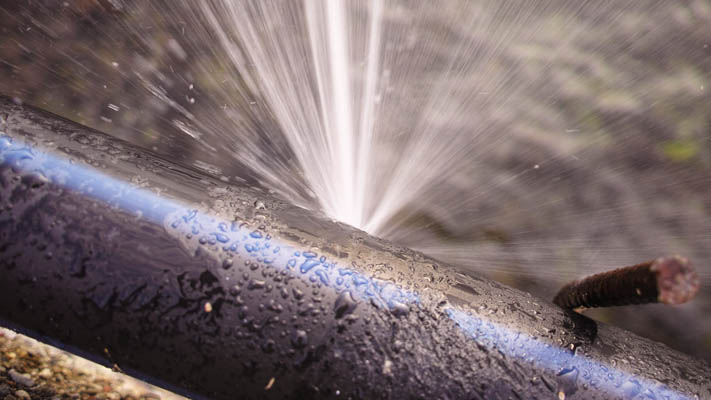What Is a Pinhole Leak in Copper Pipe?
A pinhole leak in copper is a small, localized corrosion hole that develops on the surface of copper pipes or fittings used in plumbing systems.
These leaks are typically tiny in size, ranging from a pinhead to a few millimeters in diameter, hence the name "pinhole." Despite their small size, these leaks can result in substantial water damage and pose a significant risk to the overall stability of the plumbing system.
Over time, these leaks can gradually enlarge as the corroded area expands, potentially leading to more substantial and severe leaks. We have an in-depth article on how to detect water leaks in your home.
What Causes Pinhole Leaks in Copper Pipe?
A pinhole leak in copper occurs as a result of a phenomenon called internal pitting corrosion.
This corrosive process starts when water with specific chemical properties, such as acidic water, or water with a high alkalinity (commonly known as hard water), comes into contact with the surface of copper pipes, leading to the formation of small pits. Additionally, particles like grit, sediment, and sand can contribute to the corrosion by rubbing against the interior of the pipes.
Over time, these pits gradually enlarge and develop into pinhole leaks, allowing water to escape from the plumbing system. This is especially common where the water is forced to change direction around elbows and fittings.
Factors such as water velocity, improper installation, and low-quality copper pipes can accelerate the corrosion process and increase the likelihood of pinhole leaks.
Pinhole leaks can occur in both new and old copper pipes, although older pipes are generally more susceptible due to the accumulation of contaminants and the natural aging process.
What Are Common Signs of Copper Plumbing Pinhole Leaks?
There are several signs that may indicate the presence of a pinhole copper leak:
- Water damage: Unexplained water stains, discoloration, or water on walls, ceilings, floors, and other areas near plumbing lines can be signs of a hidden pinhole leak in copper pipes.

Baseboard stains from a slab leak - Low water pressure: A sudden decrease in water pressure or weak flow from faucets and fixtures could be a potential sign of a pinhole leak disrupting the water supply.
- Increased water bills: Unexplained spikes in your water bills, despite normal water usage, can point to hidden leaks, including copper pinhole leaks that slowly waste water over time.
- Mold or mildew growth: Pinhole leaks can lead to excess moisture, creating a favorable environment for mold and mildew to thrive. If you notice moldy or musty odors, visible mold growth, or persistent dampness, it could be linked to a hidden leak.

Mold caused by a slow pinhole leak - Copper pipe discoloration: Copper pipes can undergo discoloration when they react with water. This process is called oxidization (note: copper does not rust, only iron does). Inspect visible copper pipes for signs of discoloration, such as dark spots, greenish patches (patina), or white powdery residue. These discolorations indicate corrosion, which may be linked to pinhole leaks.
How to Fix Pinhole Leaks in Copper Pipes
If you find a pinhole leak in your copper piping, it is highly likely that you will have other hidden leaks in your home. This can signify a systemic issue in your copper piping.
We have come across websites suggesting DIY solutions for repairing pinhole copper leaks, such as using replacement pipes with couplings, pipe repair clamps, or epoxy putty. However, it's important to note that these options do not address the systemic issues within the copper piping and are ineffective in preventing future pinhole leaks.
If you are dealing with systemic pinhole leaks in your copper piping, you will need a full home repipe. At Repipe Specialists, we utilize American-made L grade copper piping and PEX (cross-linked polyethylene) piping for all of our home repipes.
While copper pipes have a long history of reliability, PEX tubing is known for its durability, flexibility, and longevity. PEX is highly resistant to corrosion, pitting, and scaling, which are common issues with copper pipes over time. Additionally, PEX pipes are flexible, allowing for easier installation and reducing the risk of pipe damage from freezing or expanding.
For more information, read our article on the benefits of repiping with PEX.
Get your free estimate today
With over 75,000 repipes completed, we've perfected our One-Stop Repipe™ for your home.
Get a Quote to Replace Your Old Copper Piping
Here at Repipe Specialists, we've completed thousands of repipes across the country using Uponor PEX-A tubing. We also continually get positive customer feedback from customers about their overall home repipe experiences. We often exceed their expectations on:
- Speed: Our repipe crews typically complete a repipe in a day, returning on another day for wall patching.
- Convenience: Through our One-Stop Repipe™ Process, we handle everything from permits to wall patching to inspections.
- Cleanliness: Our crews are trained to protect your home while working (we cover all surfaces with protective sheeting) and to clean up fully at the end of each day.
- Peace of Mind: Repipe Specialists is a fully licensed plumber in every state we operate in, and we back all of our repipes with a lifetime warranty.
- Financing programs: To help take the sting out of unplanned repipe expenses, we offer several financing programs.
- Price: As a specialist that performs hundreds of repipes a week, we can deliver high-quality repipes at a lower cost compared to generalist plumbers. We have an article that covers repipe cost factors in detail. Our quotes typically range from $4,500 to $15,000 depending on the size and complexity of your project.
Schedule a free in-home consult, and a local estimator will explain all your repipe options and provide you with a written, fixed price quote. Fix pinhole copper leaks forever, repipe with PEX.

